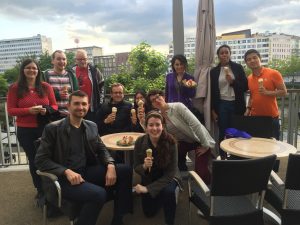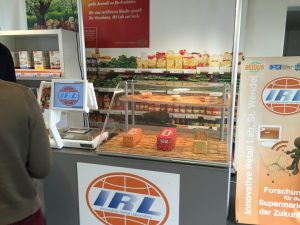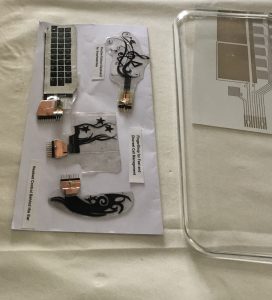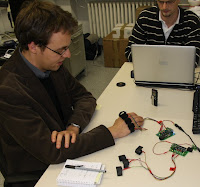It seems this term we picked a good slot for the lecture. On Thursday we had Prof. Silvia Miksch from Vienna University of Technology visiting our institute. We took this chance for another guest lecture in my advanced HCI class. Silvia presented a talk with the title “A Matter of Time: Interactive Visual Analytics of Time-Oriented Data and Information”. She first introduced the notion of interactive visual analytics and then systematically showed how time oriented data can be visually presented.
I really liked how Silvia motivated visual analytics and could not resist to adapt it with a Christmas theme. The picture shows three representations (1) numbers, always 3 grouped together, (2) a plot of the numbers where the first is the label and the second and the third are coordinates, and (3) a line connecting the labels in order. Her example was much nicer, but I missed to take a photo. And it is obvious that you do not put it on the same slide… Nevertheless I think even this simple Christmas tree example shows the power of visual analytics. This will go in my slide set for presentations in schools 😉

If you are more interested in the details of the visualization of time oriented data, please have a look at the following book: Visallization of Time-Oriented Data, by Wolfgang Aigner, Silvia Miksch, Heidrun Schumann, and Christian Tominski. Springer, 2011. http://www.timeviz.net [2]. After the talk there was an interested discussion about the relationship and fundamental difference between time and space. I think this is worthwhile further discussion.

Another direction to follow up is tangible (visual) analytics. It would be interesting to assess the contributions to understanding of further modalities when interactively exploring data, e.g. haptics and sound. Some years back Martin Schrittenloher (one of my students in Munich) visited Morten Fjeld for his project thesis and experimented with force feedback sliders [1], … perhaps we should have this as a project topic again! An approach would be to look specifically at the understanding of data when force-feedback is presented on certain dimensions.
References
[1] Jenaro, J., Shahrokni, A., Schrittenloher, and M., Fjeld, M. 2007. One-Dimensional Force Feedback Slider: Digital platform. In Proc. Workshop at the IEEE Virtual Reality 2007 Conference: Mixed Reality User Interfaces: Specification, Authoring, Adaptation (MRUI07), 47-51
[2] Wolfgang Aigner, Silvia Miksch, Heidrun Schumann, and Christian Tominski. Visallization of Time-Oriented Data. Springer, 2011. http://www.timeviz.net











 Christofer Lueg
Christofer Lueg